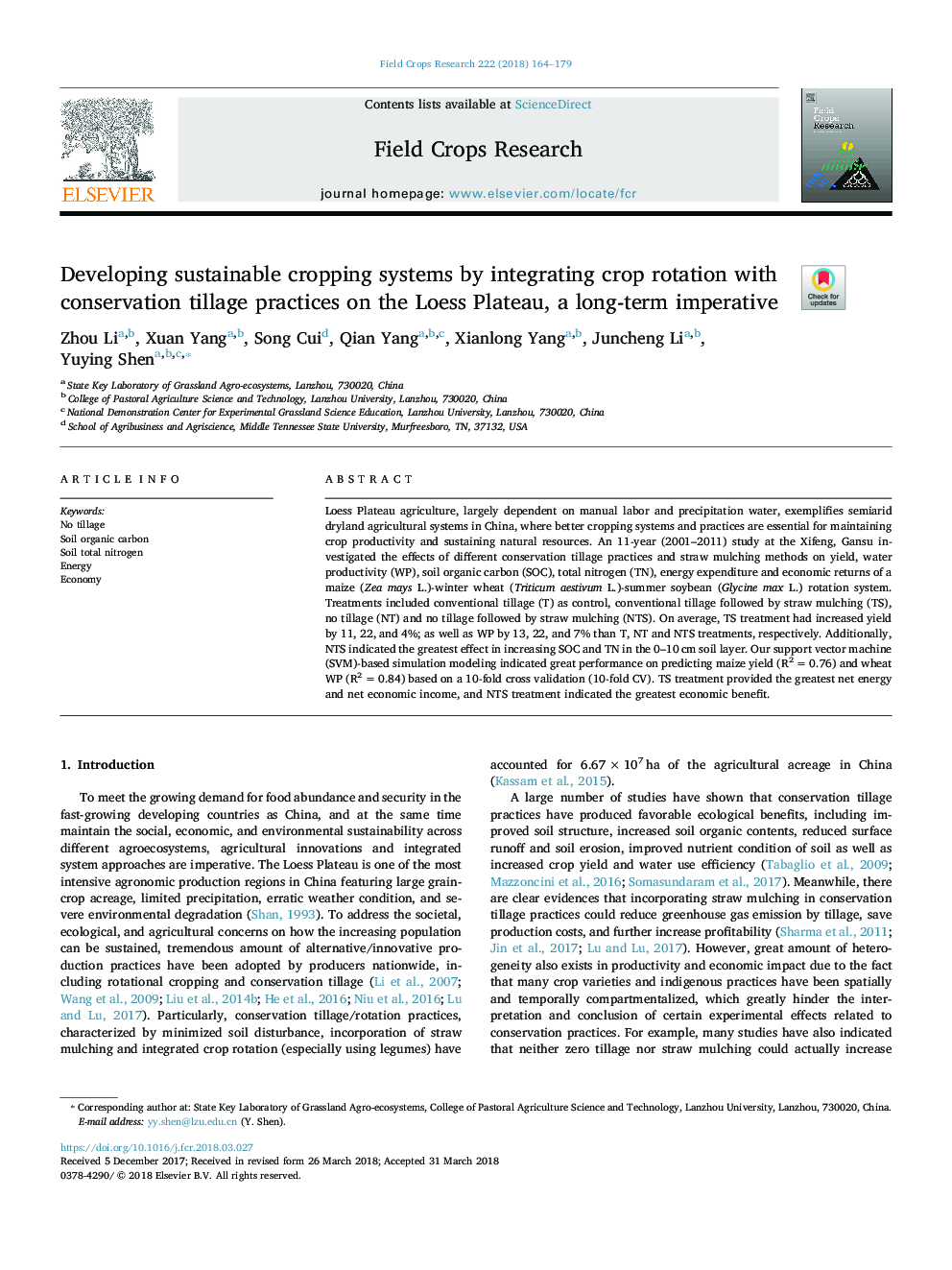| Article ID | Journal | Published Year | Pages | File Type |
|---|---|---|---|---|
| 8879196 | Field Crops Research | 2018 | 16 Pages |
Abstract
Loess Plateau agriculture, largely dependent on manual labor and precipitation water, exemplifies semiarid dryland agricultural systems in China, where better cropping systems and practices are essential for maintaining crop productivity and sustaining natural resources. An 11-year (2001-2011) study at the Xifeng, Gansu investigated the effects of different conservation tillage practices and straw mulching methods on yield, water productivity (WP), soil organic carbon (SOC), total nitrogen (TN), energy expenditure and economic returns of a maize (Zea mays L.)-winter wheat (Triticum aestivum L.)-summer soybean (Glycine max L.) rotation system. Treatments included conventional tillage (T) as control, conventional tillage followed by straw mulching (TS), no tillage (NT) and no tillage followed by straw mulching (NTS). On average, TS treatment had increased yield by 11, 22, and 4%; as well as WP by 13, 22, and 7% than T, NT and NTS treatments, respectively. Additionally, NTS indicated the greatest effect in increasing SOC and TN in the 0-10â¯cm soil layer. Our support vector machine (SVM)-based simulation modeling indicated great performance on predicting maize yield (R2â¯=â¯0.76) and wheat WP (R2â¯=â¯0.84) based on a 10-fold cross validation (10-fold CV). TS treatment provided the greatest net energy and net economic income, and NTS treatment indicated the greatest economic benefit.
Related Topics
Life Sciences
Agricultural and Biological Sciences
Agronomy and Crop Science
Authors
Zhou Li, Xuan Yang, Song Cui, Qian Yang, Xianlong Yang, Juncheng Li, Yuying Shen,
